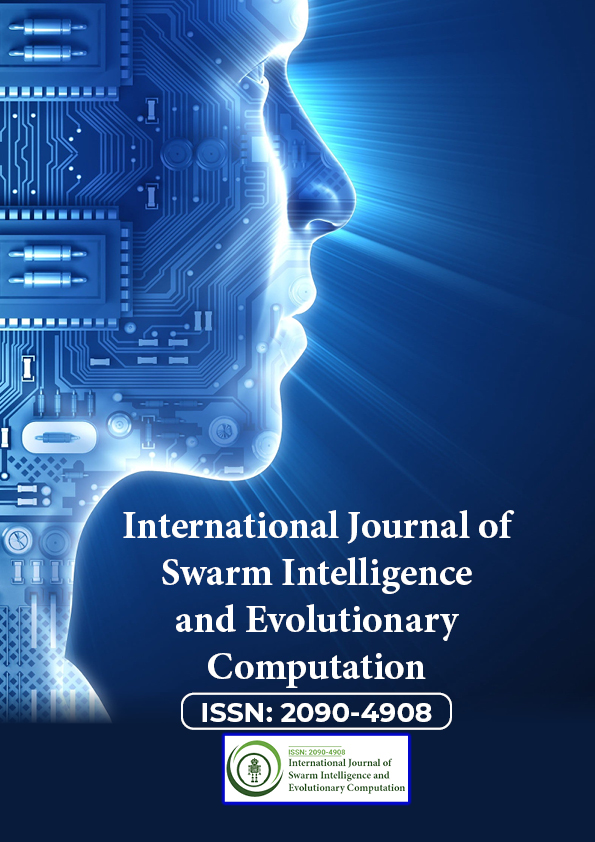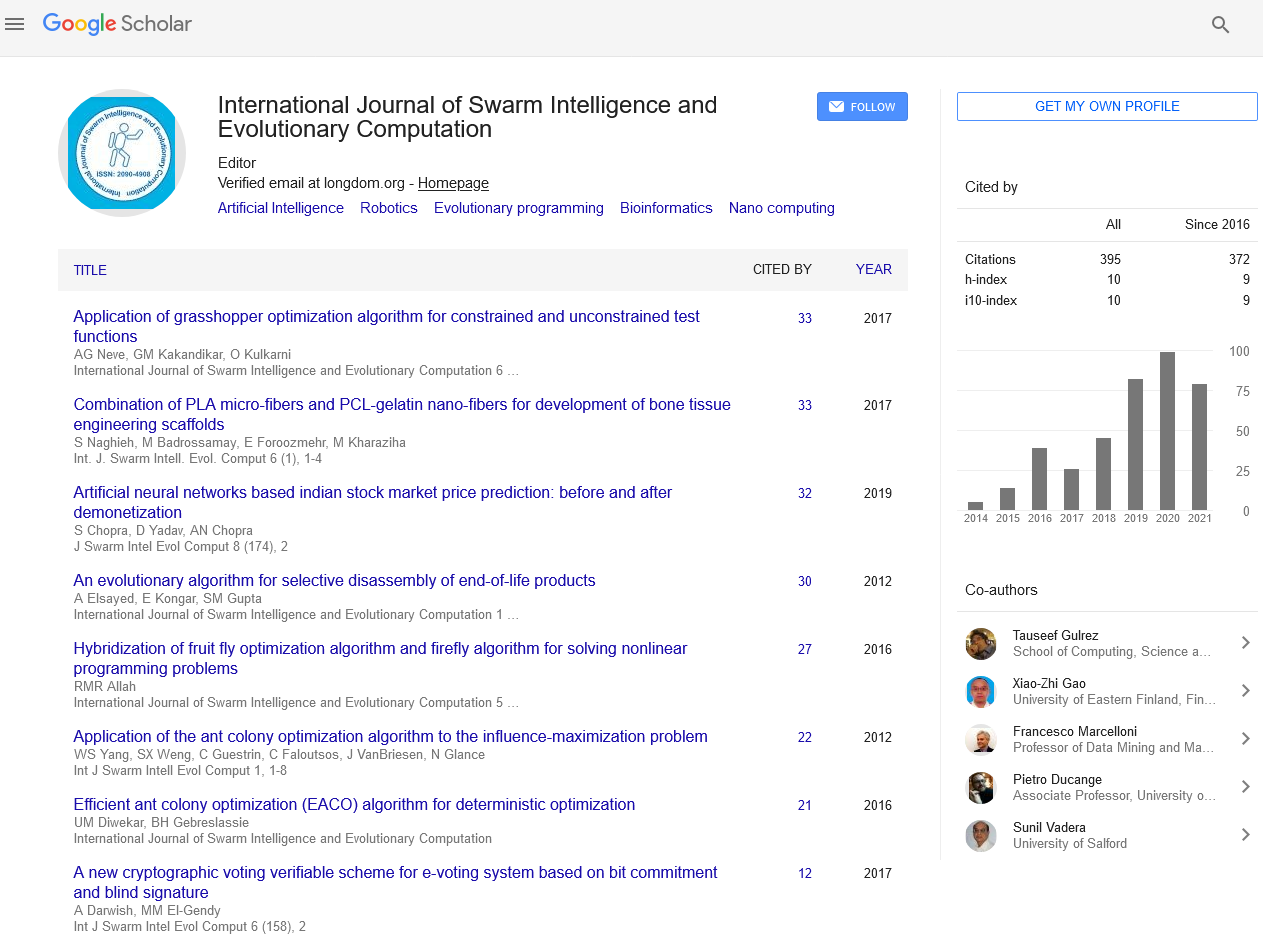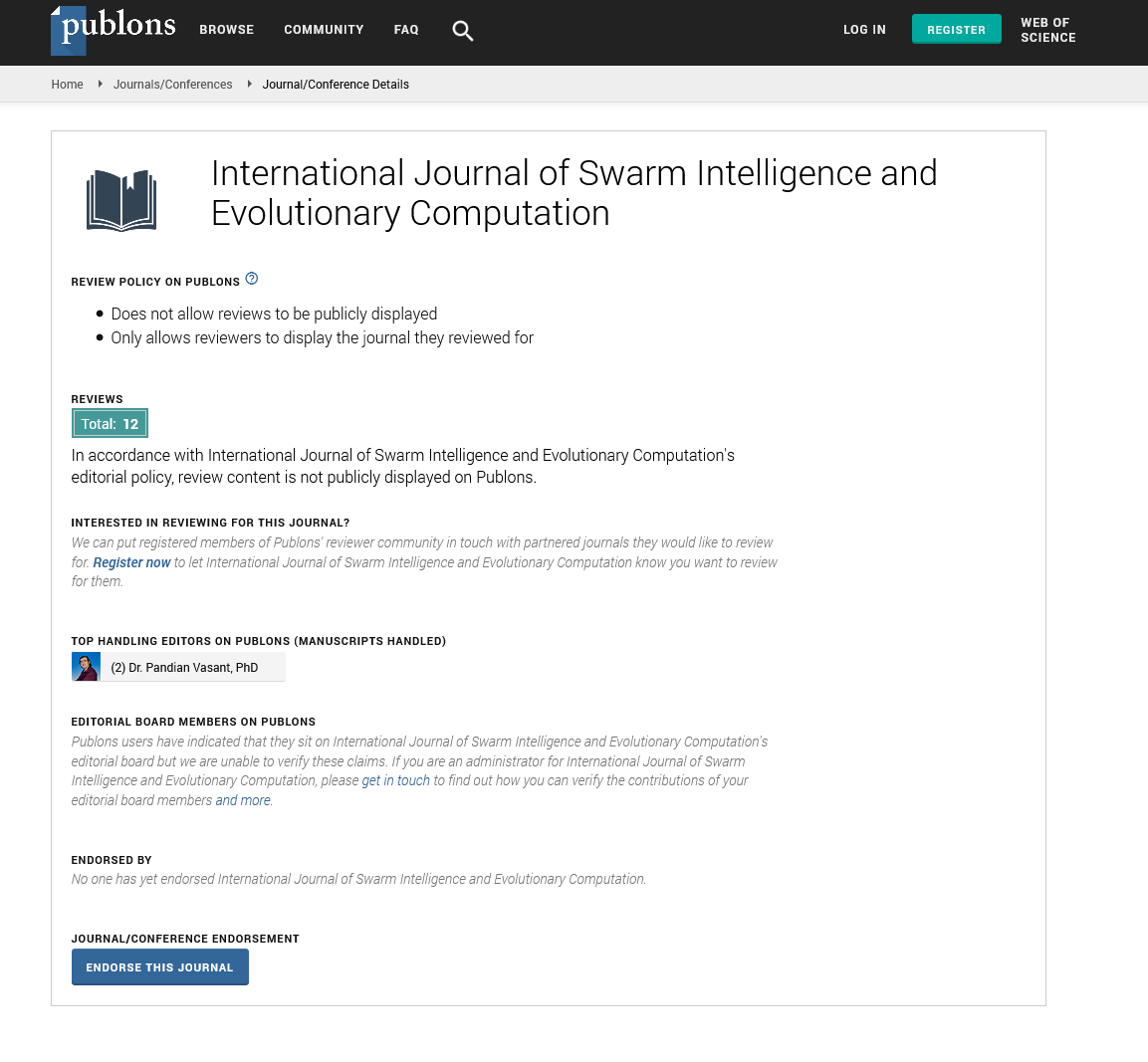Indexed In
- Genamics JournalSeek
- RefSeek
- Hamdard University
- EBSCO A-Z
- OCLC- WorldCat
- Publons
- Euro Pub
- Google Scholar
Useful Links
Share This Page
Journal Flyer

Open Access Journals
- Agri and Aquaculture
- Biochemistry
- Bioinformatics & Systems Biology
- Business & Management
- Chemistry
- Clinical Sciences
- Engineering
- Food & Nutrition
- General Science
- Genetics & Molecular Biology
- Immunology & Microbiology
- Medical Sciences
- Neuroscience & Psychology
- Nursing & Health Care
- Pharmaceutical Sciences
Commentry - (2024) Volume 13, Issue 6
Optimizing Solutions through Constraint Handling
Shang Zhou*Received: 25-Oct-2024, Manuscript No. SIEC-24-27728; Editor assigned: 28-Oct-2024, Pre QC No. SIEC-24-27728 (PQ); Reviewed: 11-Nov-2024, QC No. SIEC-24-27728; Revised: 18-Nov-2024, Manuscript No. SIEC-24-27728 (R); Published: 25-Nov-2024, DOI: 10.35248/2090-4908.24.13.404
Description
Constraint handling has long been a pivotal aspect of optimization problems, particularly when dealing with real-world systems where solutions are bound by multiple limitations. Optimization problems arise in various domains, such as engineering, economics, logistics and computer science, where the goal is not merely to find any solution but to identify the best solution that meets a set of predefined conditions or constraints. These constraints can be anything from physical limitations, such as maximum weight or volume, to regulatory or financial restrictions. Optimizing solutions while adhering to these constraints is where the challenge lies and effective constraint handling is the key to ensuring that solutions are not only feasible but also optimal.
The process of optimizing solutions through constraint handling involves ensuring that a solution satisfies all the constraints imposed by the problem while simultaneously seeking to improve certain objectives. Constraints come in many forms: equality constraints, which require certain variables to meet exact values, or inequality constraints, which impose upper or lower bounds on variables. In optimization, these constraints must be factored into the search for the optimal solution, often complicating the task by reducing the feasible solution space.
A common approach to handling constraints in optimization is to use penalty functions. In this approach, the objective function is modified by adding penalties for any constraint violations. This allows optimization algorithms to still find solutions in the infeasible space while encouraging them to move towards feasible solutions by increasing the cost for violating constraints. For instance, in a vehicle routing problem where the goal is to minimize travel time while respecting vehicle capacity and delivery windows, a penalty could be added each time a solution violates these capacity constraints. Over successive iterations, the algorithm works to reduce these penalties by finding solutions that avoid constraint violations. While this method is simple and widely used, it can sometimes struggle to balance the objectives and penalties in a way that leads to truly optimal solutions.
Another technique that has gained popularity in recent years is the use of Evolutionary Algorithms (EAs), which simulate the process of natural selection to evolve solutions over generations. EAs can effectively handle both hard and soft constraints. In the context of constraint handling, hard constraints are those that must always be satisfied, such as physical limits or legal requirements. Soft constraints are more flexible and can be violated to some extent, like user preferences or performance targets. Evolutionary algorithms work by evolving a population of potential solutions, selecting those that perform best based on fitness criteria and applying crossover and mutation to generate new solutions.
The application of constraint handling is important across various fields. In manufacturing and engineering design, for example, designers must optimize designs subject to constraints such as material properties, space limitations and cost. In logistics, transportation optimization must account for time windows, vehicle capacities and delivery schedules. Ultimately, optimizing solutions through constraint handling is an ongoing challenge that requires both innovation and sophisticated computational techniques. While many methods are available, the choice of approach depends on the nature of the problem and the specific constraints involved. Hybrid methods that combine evolutionary strategies, penalty functions and other optimization techniques are particularly promising, as they offer flexibility and efficiency in solving complex, constrained problems. As technology continues to advance, new and improved algorithms will likely emerge to tackle even more intricate optimization tasks, making it possible to solve problems that were previously intractable.
Citation: Xu J (2024). Pheromone Trails and Artificial Intelligence: The Mechanics of Ant Colony Optimization. Int J Swarm Evol Comput. 13:404.
Copyright: © 2024 Xu J. This is an open-access article distributed under the terms of the Creative Commons Attribution License, which permits unrestricted use, distribution and reproduction in any medium, provided the original author and source are credited.


